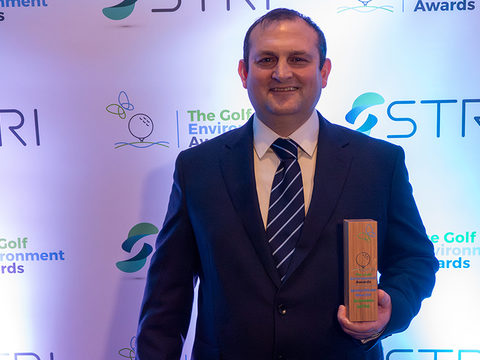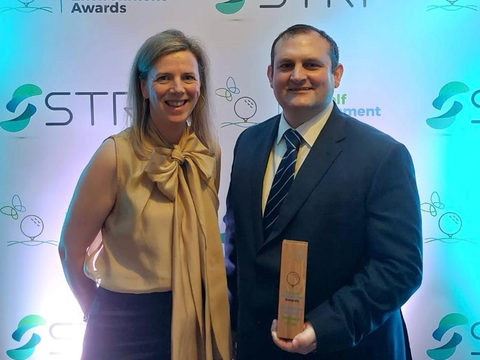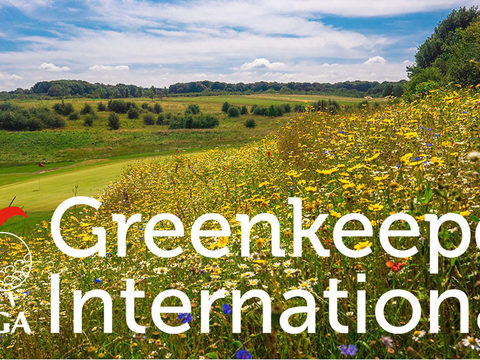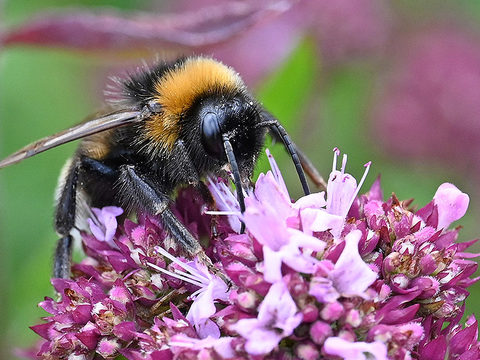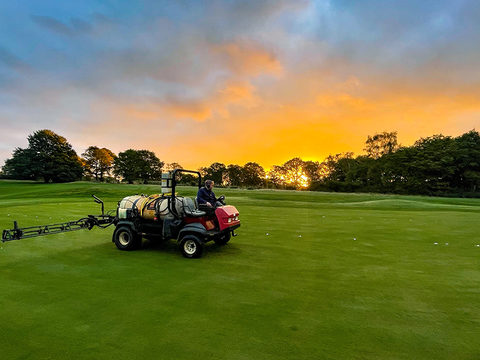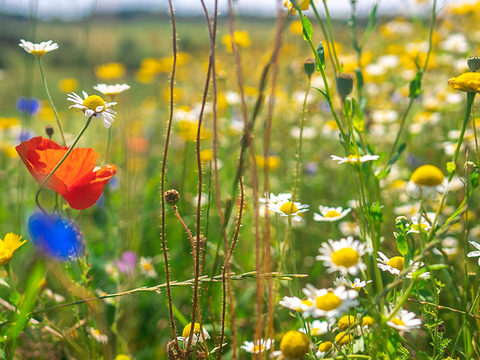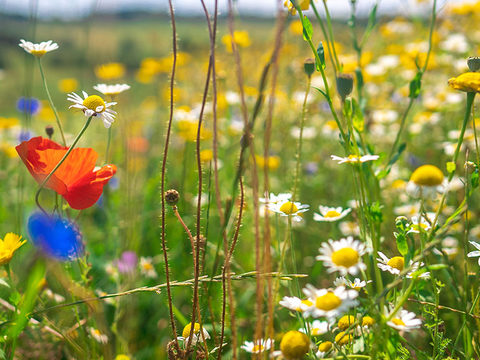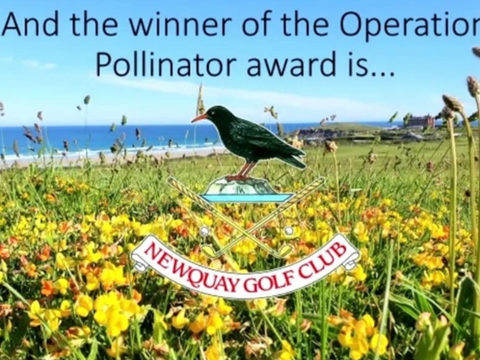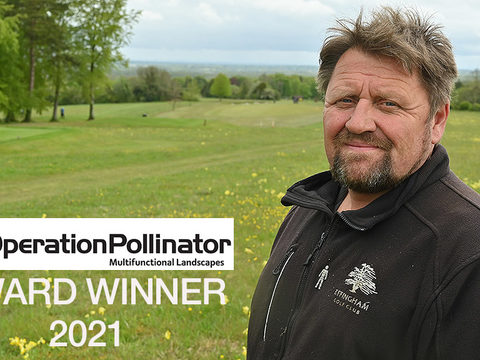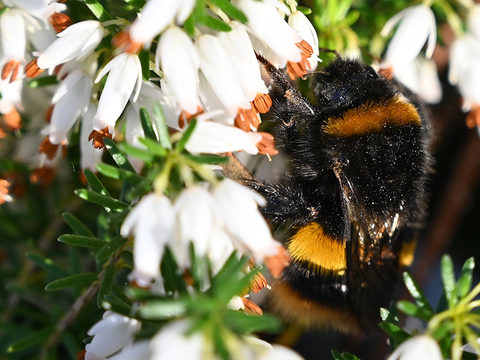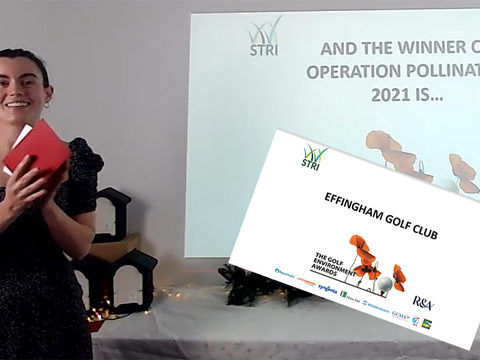Player power drives ecology success
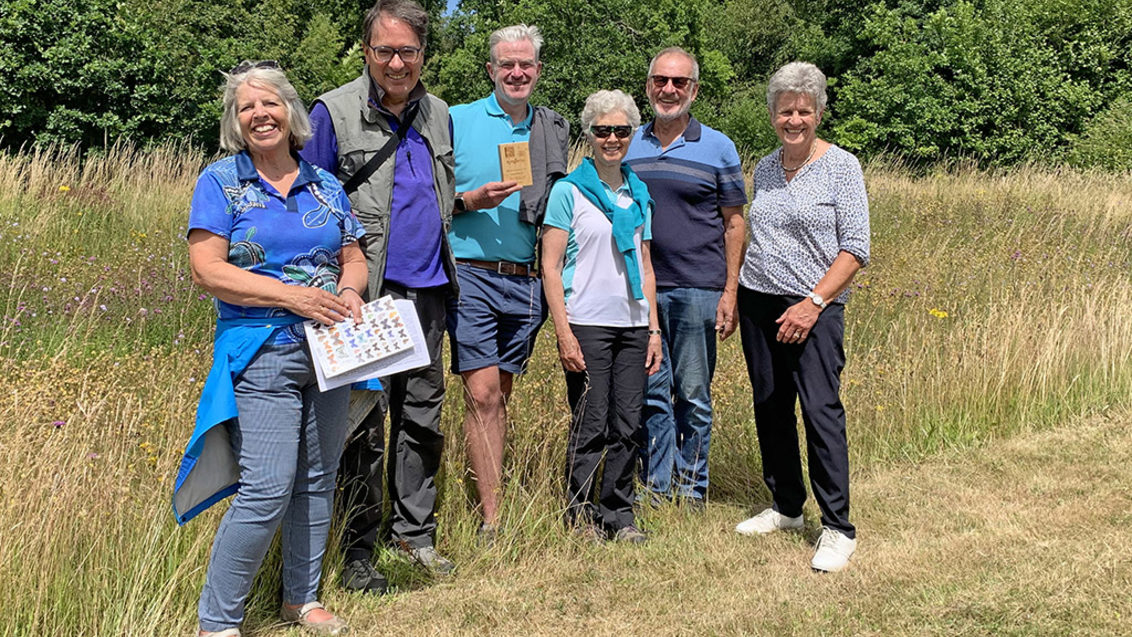
Inspirational Hampshire greenkeeper and course manager, Iestyn Carpenter, has harnessed player power at Corhampton Golf Club to deliver an award-winning environmental initiative.
Instigating a pioneering Ecology Group of players and enthusiasts they have created an ethos of ecological enhancement across the club that has won the top accolade of Syngenta Operation Pollinator champions for the second time, as part of the national Golf Environment Awards.
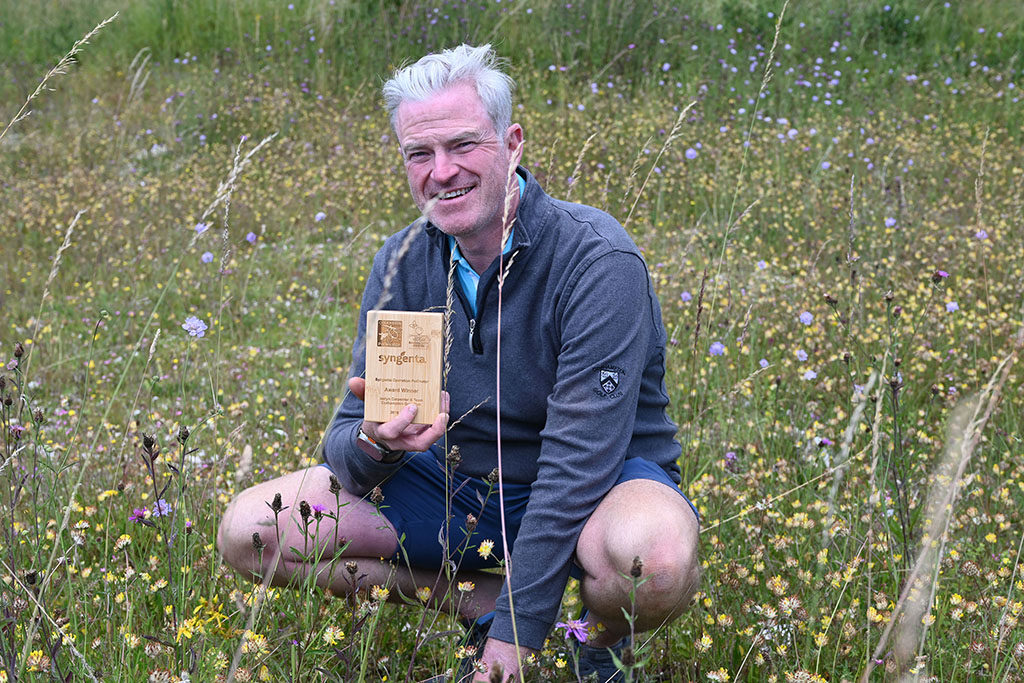
But whilst the plaudits of award winning have been pleasing, there is even greater satisfaction in the fact that the club has become recognised as a regional stronghold for the endangered Small Blue butterfly – within three years of focusing on the habitat creation.
The vast rolling agricultural arable fields of the South Downs that surround the club were something of a desert for butterfly and moth sightings, yet incredibly the tiny Small Blue – Britain’s smallest butterfly - has found the areas of chalk scrape and natural flora that the club has created.
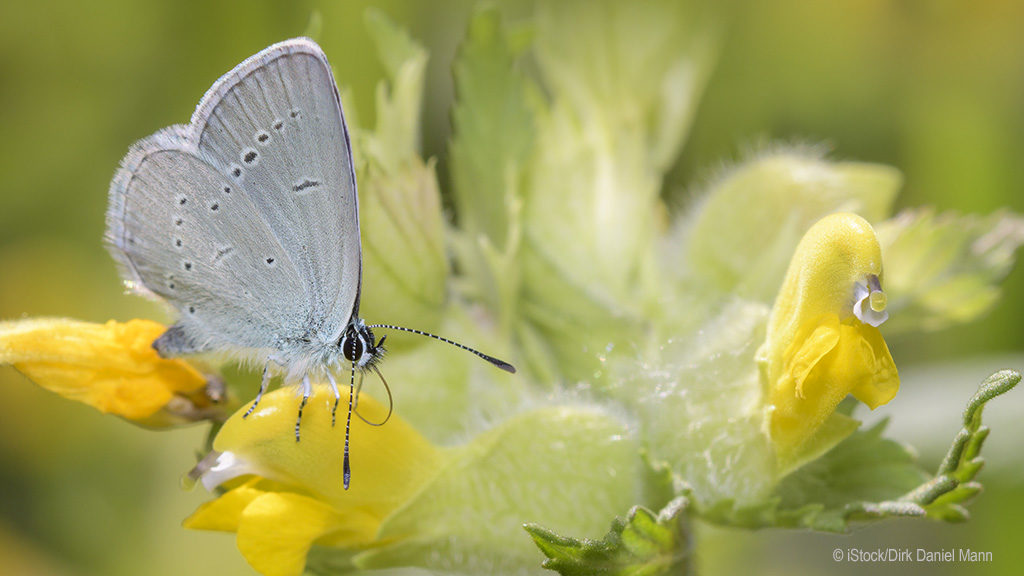
“We were told that if we put the habitat back then wildlife would find it,” recalled Iestyn. “What has been amazing, is just how fast that has happened. And the immense diversity of species that has been recorded so quickly.”

He believes that has only been possible with the engagement of the club members, which has generated the enthusiasm and commitment within the club to release resources to make it happen.
What started as an ecology walk to explain to members some of the things that were being done and potential improvements, quickly grew with the enthusiasm and encouragement of players and club managers.
“Those who were keen to get involved were adamant they didn’t want another club ‘committee’,” Iestyn emphasised.
“But the Ecology Group is a better description of their interests and way of working collaboratively for something they believe in, and that gives them pleasure and enjoyment too.
Iestyn is keen to point out that the Ecology Group draws on the strengths and interests of the diverse members, including publishing a newsletter for members, providing the materials and labour to build bird and bat boxes and the initiative and time to apply for grants and support for the projects.
“With just five greenkeepers on what is quite a large site, we are very tight for labour just to manage the course,” Iestyn pointed out. “The absolute priority has to remain the golf course and continuing to improve the playing surfaces year on year. So we need all the help we can get for any additional projects.”
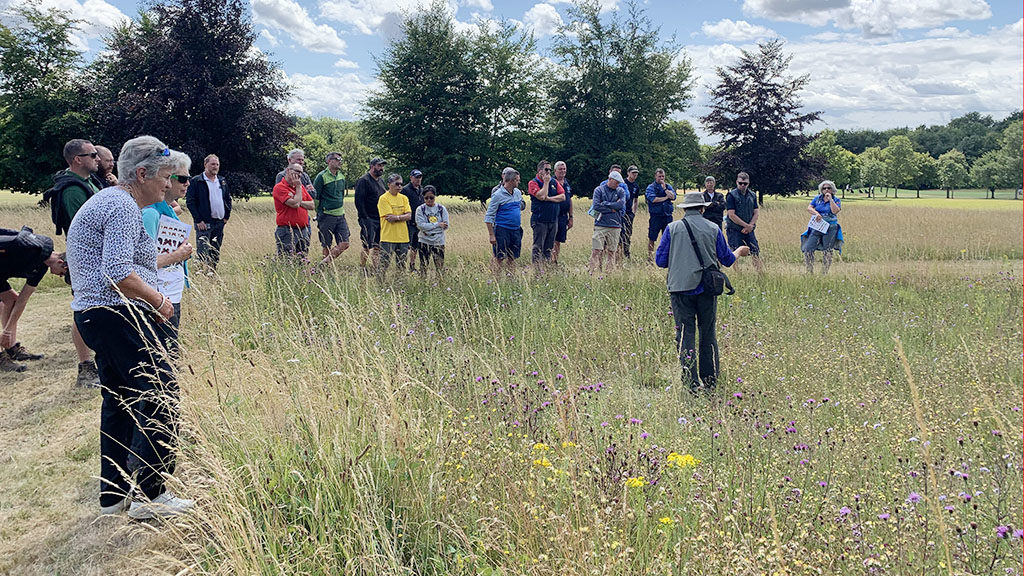
He describes the Ecology Group’s enthusiasm as infectious for the whole greenkeeping team. “We just come up with an idea or suggestion and they are instantly looking for a way to make it happen.
With the chalk scrapes, for example, Iestyn and the team undertook the initial clear and construction. But now it is the Ecology Group that carries out the bulk of the annual maintenance, to cut and remove vegetation that allows the essential wildflowers to flourish.
“If it were left to the greenkeeping team it might take weeks to find sufficient spare time outside of the course maintenance to complete the clearance." said Iestyn.
"Now the Ecology Group organise themselves into a couple of afternoons working parties and have the job completed at the optimum time for the vegetation management and the insect species.
“That’s a huge help, but also means that the members have a far better idea of what is involved with the greenkeeping and the overall course management, and the greenkeeping team appreciate the support they are receiving - which is extremely positive from both sides.”
The greenkeeping team is still involved where mechanical work is required, or for spot spraying invasive weeds with a selective herbicide where invasive species start to dominate, for example.
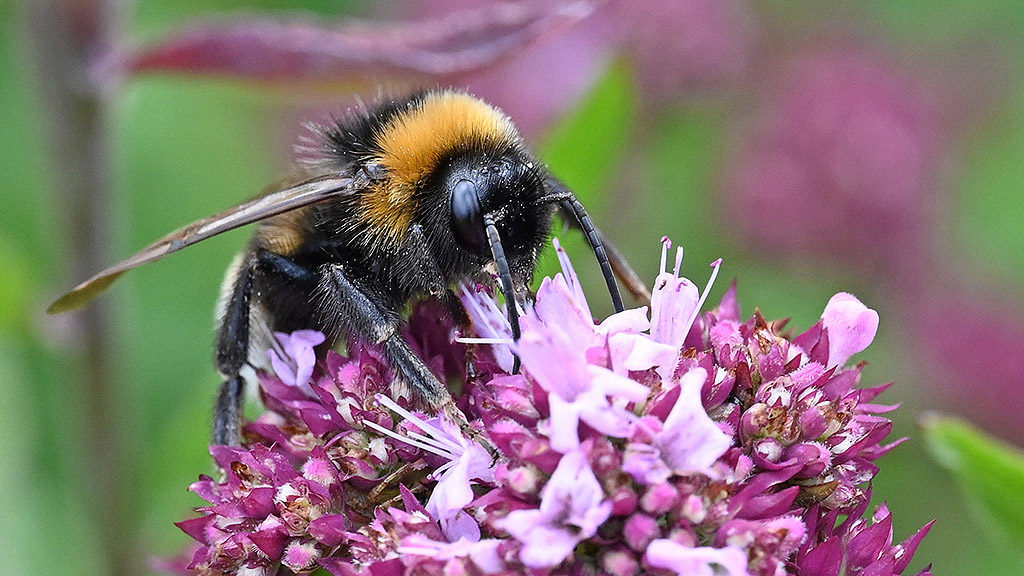
Overall, the chalk scrapes at Corhampton account for less than 1% of the area, but have an immense contribution in supporting a significant proportion of the course’s biodiversity. The variety of habitat, alongside extensive thin wispy rough with abundant wildflowers and woodland managed to nurture wildlife, creates an ecological oasis in the wider environment. Importantly it is a crucial connecting haven between other ancient Hampshire wildlife respite habitats.
Club member and Ecology Group enthusiast, Aelwyn Emmett, added: “We as members love our course and were highly motivated to get involved.
“We are all increasingly aware of the loss of habitat and the issues that it causes. While most people can do things at home in the garden on a small scale, on the golf course we have the chance to collectively do something really significant and make a real difference.
“It is helping to beautify our course and make it a more interesting and enjoyable place to play. And there is also great satisfaction in knowing that we are helping existing biodiversity, as well as actually bringing something back," she enthused.
“We know that we are fortunate to have Iestyn as our Course Manager and the greenkeeping team, so it is a way to say thank you and to support them. But we also get to enjoy being part of the Group and creating something collectively”.
“The key is to get members involved, and to keep them interested and engaged in what is being achieved.”
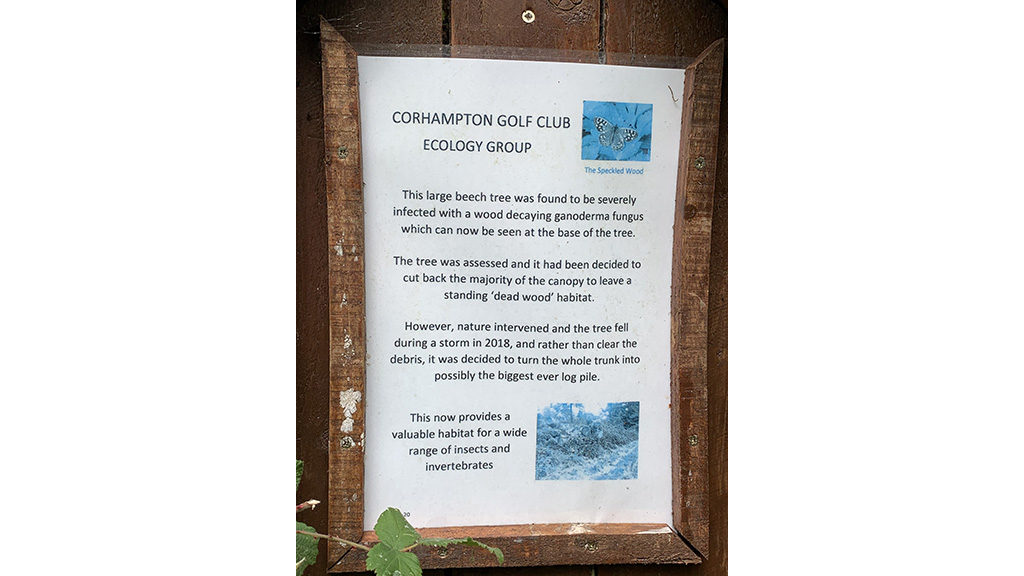
Iestyn acknowledges he has also been extremely fortunate to have the help and guidance of keen local golfer and passionate butterfly enthusiast, Clive Wood, a member of the local Hampshire & IoW branch of Butterfly Conservation.
Clive’s knowledge of habitat creation has been instrumental in establishing the Operation Pollinator habitats and ongoing management. “Initially the focus was on bumblebees, but if you provide the pollen and nectar habitats it is a positive action for all pollinating insects, including the thousands of species of butterflies and moths that are equally important as bees for their pollinating services.
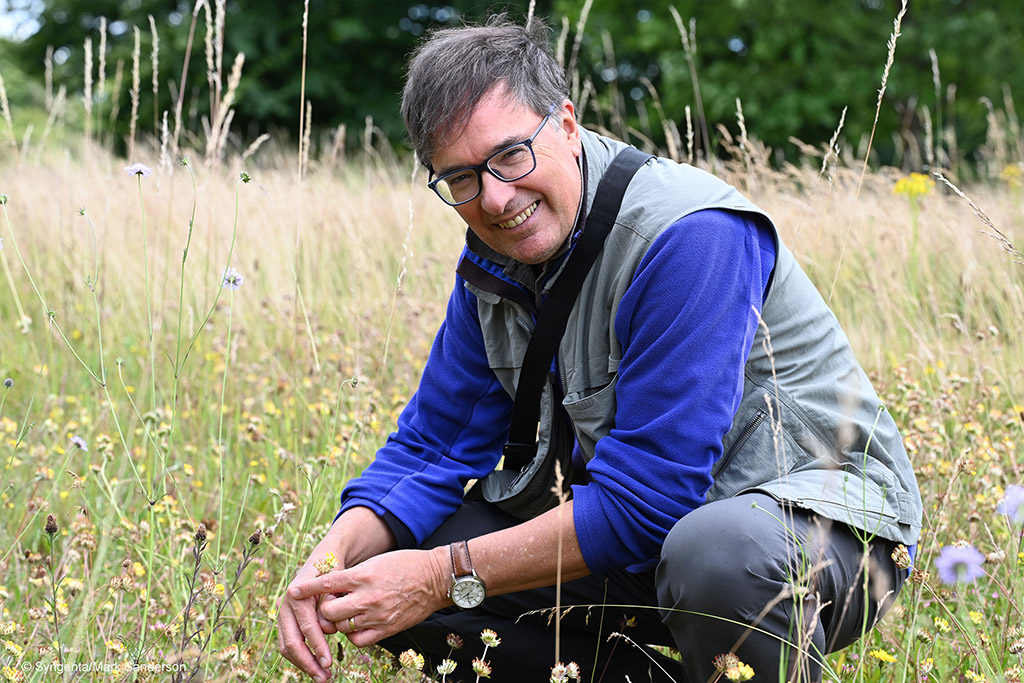
“Understanding what habitat is native to the area, and particularly what is missing within the local environment, gives the opportunity to focus on habitat creation that will have maximum impact and benefit for native biodiversity.”
“With just a little more attention it is possible to create something bespoke for a specific species that could have a huge impact, just as the team at Corhampton have done for the Small Blue," reported Clive. "But in doing so they have benefitted so much more too.”
Clive has also been instrumental in working with the Ecology Group to undertake surveys and recordings of butterflies and biodiversity across the habitat areas. That has given a benchmark of progress and focus, along with valuable data and evidence to engage with members and the club management.
The members trained in butterfly identification now undertake a set survey route and record all the species they see. It’s a scientific approach that puts Corhampton on the map within the UK Butterfly Monitoring Scheme as a national insect records database.
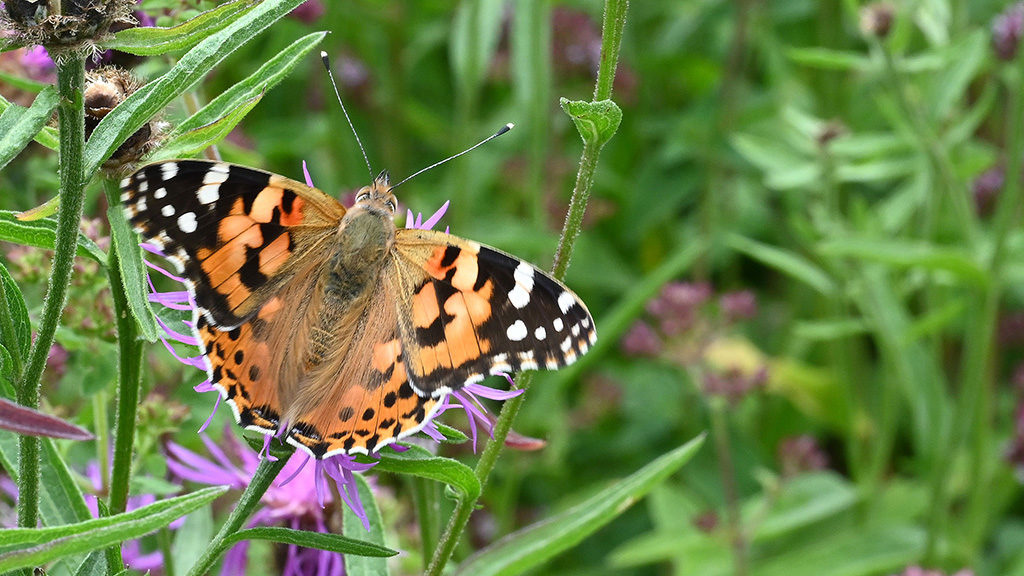
Their work has seen recorded butterfly numbers increase from 387 in 2021, to 525 in 2022. Furthermore, the numbers identified were higher on five of the six survey dates in 2022, compared to the previous season.
In 2022 there were 25 different species of butterfly identified by the Ecology Group survey team, compared to 23 in 2021. Meadow Brown, Small White, Common Blue and Gatekeeper butterflies made up the most abundant species.
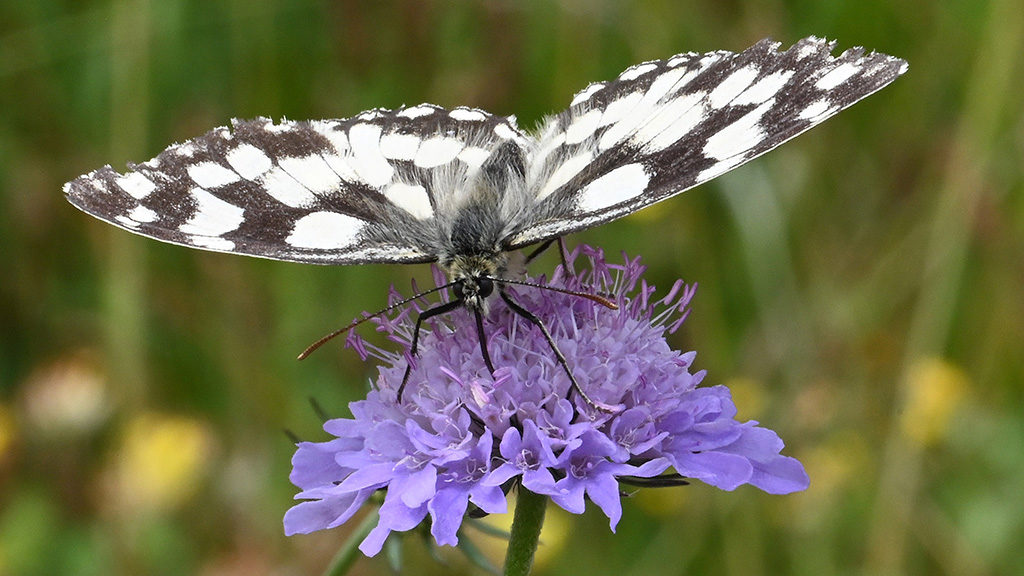
“The beautiful Common Blue bounced back strongly amid the summer sunshine with 48 individuals recorded. Its larval foodplant is usually Common Bird’s-foot Trefoil and should breed well on the chalk downland at Corhampton. The Gatekeeper also saw a welcome increase from 5 to 48 individuals,” he reported.
“The Green-veined White records are noteworthy because the butterfly favours lush, cooler conditions and is useful evidence that the golf club is able to provide a wide variety of habitat suitable for different species.”
“The Silver-washed Fritillary is a wonderful woodland and hedgerow species; it’s our largest fritillary and great to see on the wing,” enthused Clive.
“The Small Blue was a target species following the creation of the new scrapes and the survey shows Corhampton Golf Club remains home to Hampshire’s newest breeding colony of this priority species, under Section 41 of the Natural Environment & Rural Communities Act, 2006,” he added.
Iestyn Carpenter reiterated that one of the most satisfying elements of the Operation Pollinator habitat creation was being able to achieve so much, in so short a period of time.
“As a team we have loved learning so much about the local ecology. And it’s also been great to be involved with the enthusiastic and dedicated people that have forged into the Ecology Group.”
“I would urge any golf course to get involved with Operation Pollinator and to engage with members to get them involved with supporting and driving sustainable initiatives. It’s our experience that with a small group of enthusiastic people, you can create something special and promote golf as a positive force for the environment and responsible use of resources.”

Small Blue restoration
The Small Blue (Cupido minimus) is Britain’s smallest native butterfly. It does occur locally in small numbers across Britain, but primarily in chalk landscapes of southern England. Its numbers have been in decline.
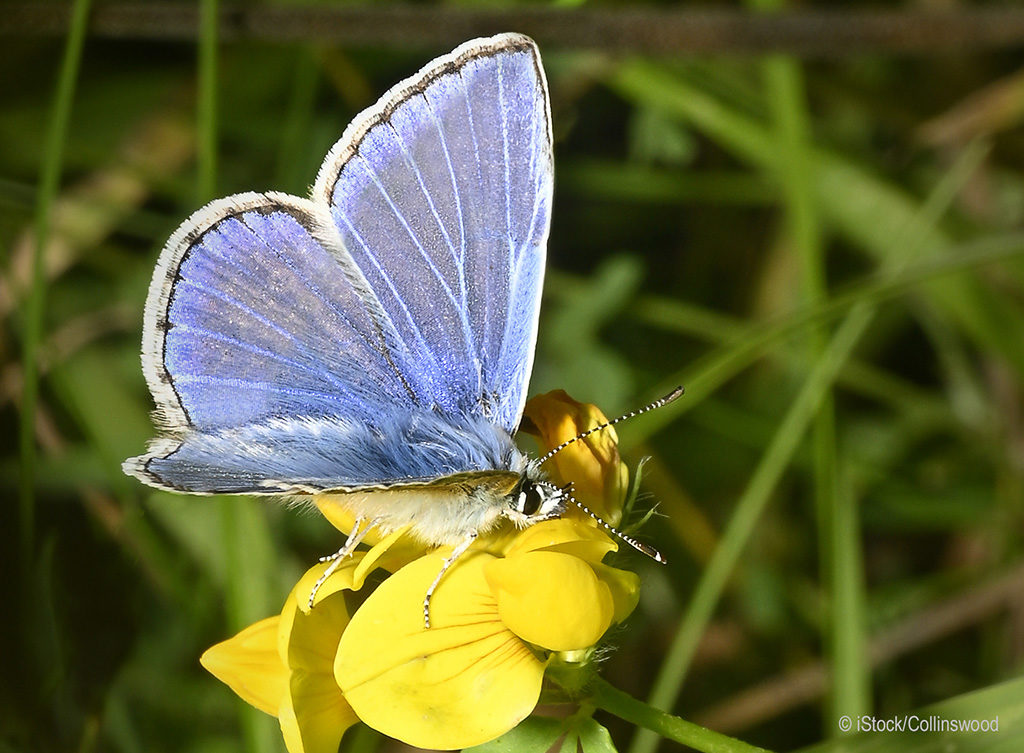
The ecology charity, Butterfly Conservation, supported by Natural England, highlights that the Small Blue is under threat due to its small size and increasing isolation of populations. Local extinction events are probably commonplace, it has warned. Due to the loss and fragmentation of habitat, recolonisation is becoming less frequent.
It urges that restoring connections between colonies is vital for long-term conservation of the species. Even small habitat creation schemes, such as butterfly banks and scrapes, can provide an important stepping stone in the landscape.
The Small Blue’s total reliance on Kidney Vetch as the sole food source of its larvae inevitably makes it susceptible to habitat loss. Furthermore, if the habitat is not actively managed, the quality and value of Kidney Vetch can quickly decline and fail to support breeding colonies.
Advisors from Butterfly Conservation advocate new habitat is created every few years on a rotational basis, to reinvigorate the Kidney Vetch. Even small scrapes (1m x 1m) dug with hand tools can be beneficial, although machinery such as bulldozer or excavator is more appropriate for larger areas.
Sites can be allowed to colonise naturally with Kidney Vetch, or seeded in autumn or winter using seed of local provenance harvested in late summer. Areas of tall fine grasses also need to be left alongside, to provide a resting place for male adult Small Blues during the breeding season.
Small Blues lay eggs on the Kidney Vetch flower heads from mid-May to mid-July, with caterpillar larvae then reliant on the plant right though to the following spring. Pupation occurs from April the following season, with adults emerging and flying during May and early June, with a smaller second flush typically in August, if weather conditions are suitable.
Operation Pollinator rewards
Syngenta Operation Pollinator supports golf clubs and sports turf facilities to establish and manage areas of pollen and nectar rich wildflower habitat that will provide essential food resources and nesting habitat for pollinators, including native bees, butterflies and other insects.

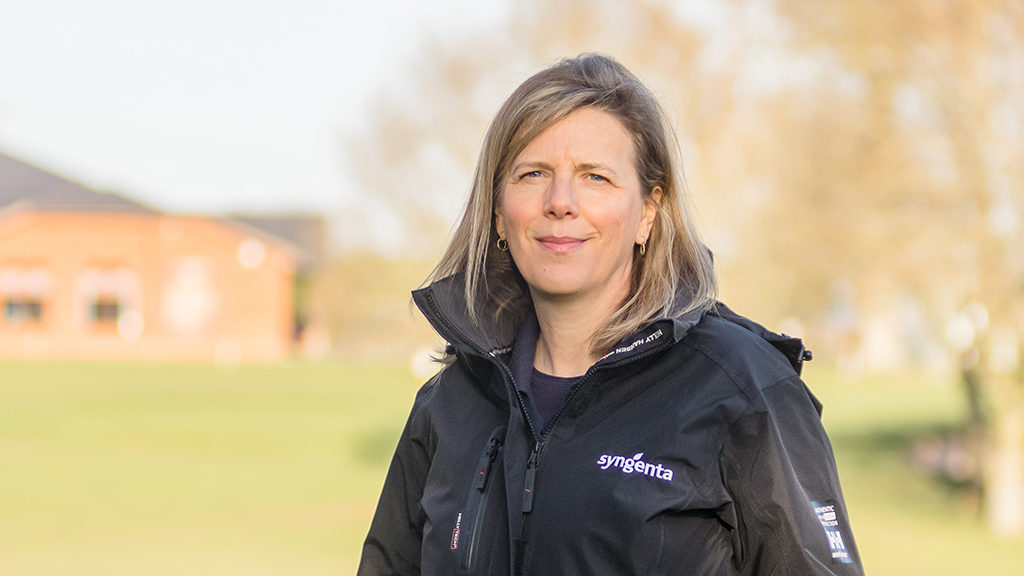
Sarah Hughes, Syngenta Business Manager, highlighted golf courses and sports facilities can provide immense ecological resources and outstanding habitats, without compromising on high quality surfaces and playing conditions.
“Even managing small out of play areas for ecological benefit can make a positive contribution to biodiversity and the overall sustainability of the industry,” she advised.
“Operation Pollinator provides a framework of advice and a network of enthusiastic people who collectively make a huge difference. It makes golf courses a more attractive place for players and biodiversity.
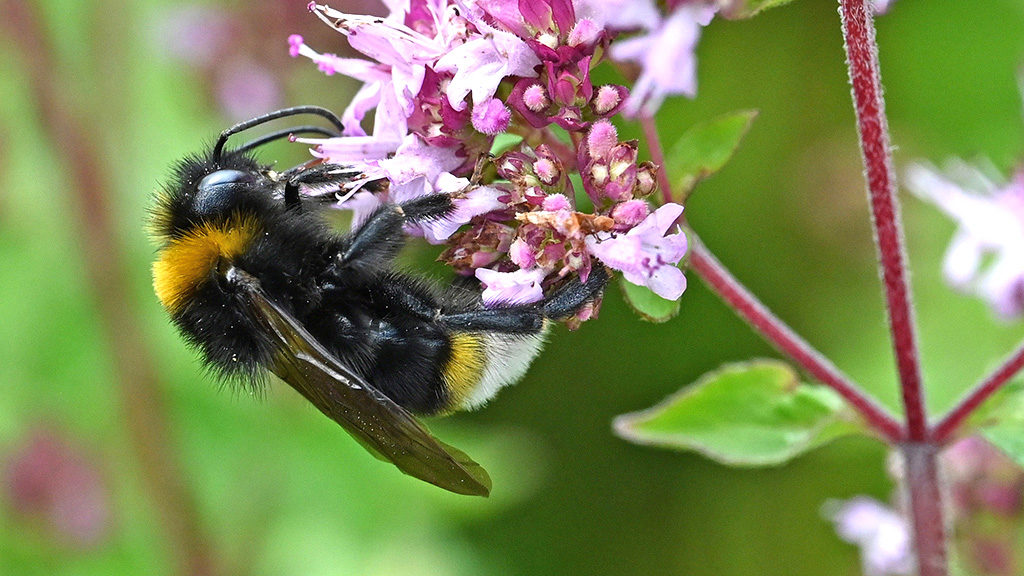
“With over 250 clubs registered and actively involved in Operation Pollinator, it has created a significant national habitat resource and proving that sports turf and the environment can be effectively managed side by side.”
The Syngenta Operation Pollinator Award recognises golf courses that contribute to positive action for pollinators through habitat creation and management. It is presented annually at BTME as part of the Golf Environment Awards, independently run by STRI ecologists.


